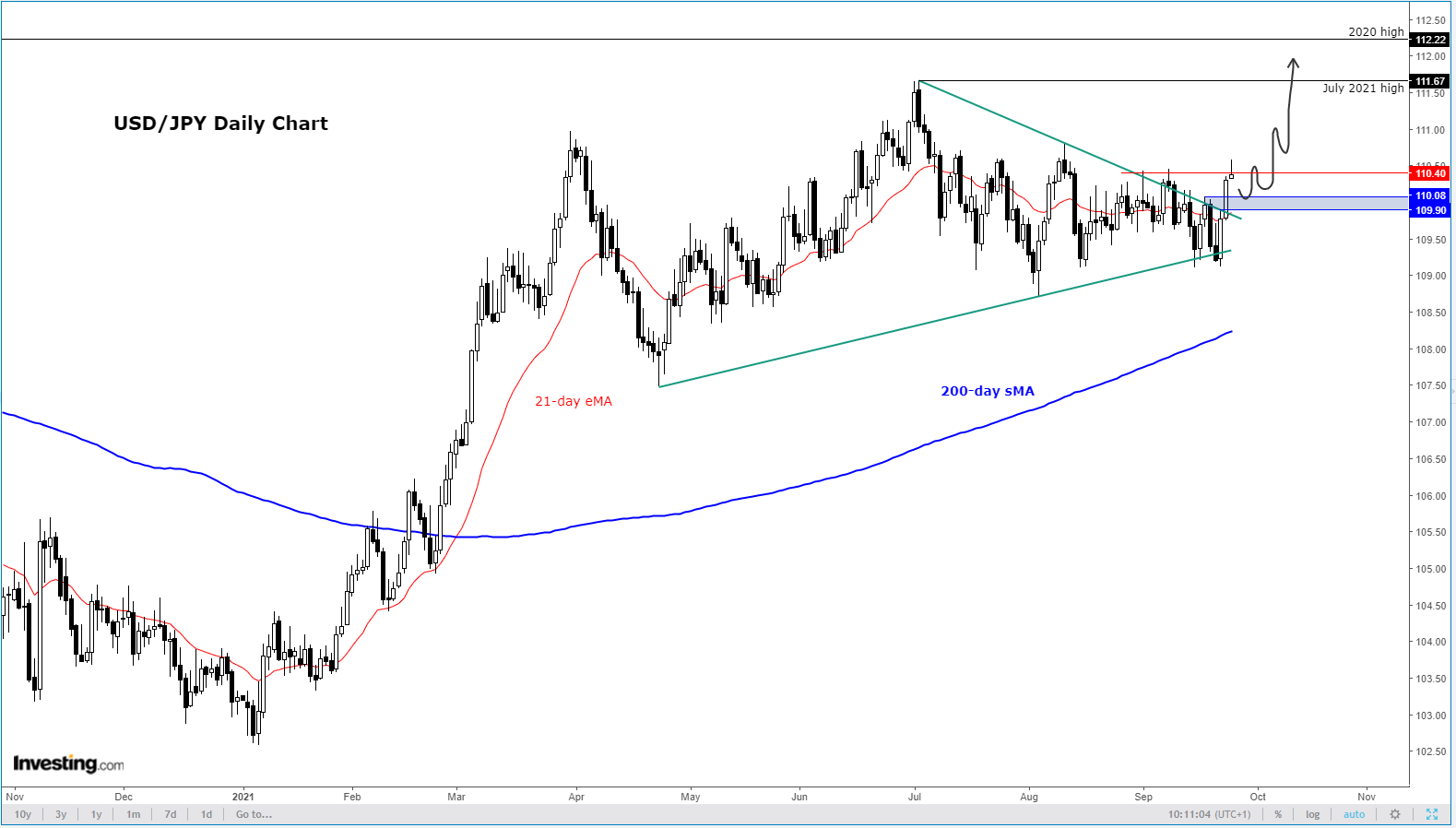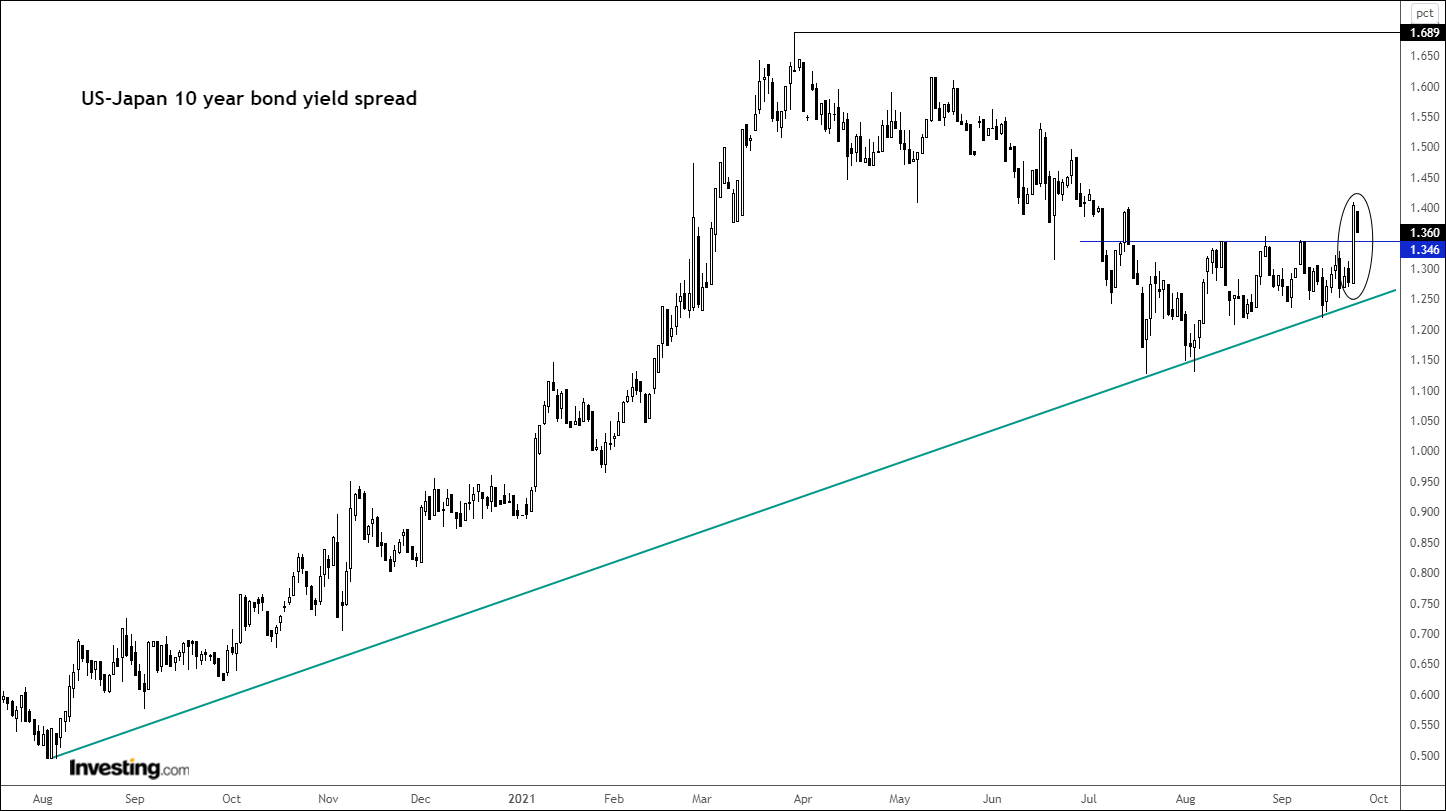This article was written exclusively for Investing.com.
It has been a busy week for central banks, with the overall message being that the global economy is continuing to recover and that we are getting closer to the start of policy normalization.
That was certainly the message from the Federal Reserve and Bank of England, although central banks in Japan and Switzerland continued to re-iterate that their policies won’t be changing anytime soon. As a result, we have seen the yield differential between hawkish central banks widen compared to the dovish ones. This should fundamentally support currencies such as the dollar and pound sterling against currencies where the central bank is comparatively dovish. The likes of USD/JPY and GBP/CHF come to mind.
In fact, the USD/JPY has potentially paved the way for a run to a new yearly high—assuming that risk appetite doesn’t deteriorate significantly to cause a sudden increase for haven demand for yen. But from a purely technical point of view, the breakout from the triangle pattern means the path of least resistance is to the upside:

Going forward, I would be expecting dips back to old resistance levels such as 109.10-110.10 area to hold as support. If the buyers defend their support levels successfully, the next logical levels to aim for next would be the July high at 111.67 and then last year’s high at 112.22.
Meanwhile, from a fundamental point of view, the USD/JPY should remain supported in the long term regardless of the short-term fluctuations. Fed Chair Jerome Powell said the US central bank could begin scaling back asset purchases in November and complete the process by mid-2022. Additionally, more FOMC members indicated they would vote for a rate hike next year.
As the Fed’s policy normalization process gets nearer, this should put further upward pressure on bond yields, causing the yield differential between the US bonds and those of nations where the central bank is comparatively dovish (such as the BoJ), to widen.
In fact, the Japan 10-Year vs US 10-Year bond yield spread has broken out from its recent consolidation in the favour of the US. If the breakout can be sustained, this should keep the USD/JPY bulls happy:

The only major caveat is if sentiment towards risk turns sour again. In that case, safe haven flows might support the yen.
